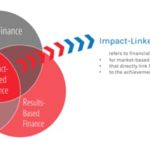‘It’s Not About Subsidies’ – And Five Other Myths About Blended Finance
Editor’s note: This is the first article in a two-part series. Here is the second: “Making Subsidies Smarter: How to Create More ‘Bang for the Buck’ in Blended Finance.“
The excitement around blended finance is growing, based on the conviction that it is a powerful approach to closing the gap for financing the SDGs. But this momentum has led to a number of unrealistic expectations and myths about what blended finance is, and what it can do. Before we dive deep into these myths and misconceptions, let’s first define what blended finance is: It is a structuring approach using “catalytic capital from public and philanthropic sources to increase private sector investment in sustainable development,” as the global network Convergence describes it. Catalytic capital differs from commercial capital in two basic ways: It bears higher risk and/or seeks lower returns than the market would accept. This “concessionality” is exactly what makes it catalytic.
Blended finance has started to gain encouraging traction, with an estimated US $152 billion in private capital mobilized for development from 2012 to 2017. This is a great contribution to bridging the SDG financing gap, but considering the sheer size of the gap, there is a broad consensus that we are far behind in mobilizing sufficient private capital to achieving these goals, as the OECD points out in a blog for its conference on “Private Finance for Sustainable Development.” We have to get better and faster in making finance work for positive impact. To do so, it is important to face the realities of the market. Many of the public funders engaged in this field do not realize (or do not openly admit) an inconvenient truth: By providing catalytic capital to mobilize private investment, they are subsidizing investor returns. Catalytic capital for blended finance – such as first-loss capital, or loan or equity guarantees – is typically made available on terms below market rates. Thus, it inevitably involves a subsidy element. The commercial capital market, represented by private sector actors, would never give a guarantee for free, or provide a loan for a high-risk project at low interest rates – it is simply not in their DNA. This raises an interesting question: Is providing subsidies for the benefit of commercial investors a fundamentally sound approach? And if so, are there smart ways to use these subsidies to make sure that they really accelerate development impact?
Two Approaches to Blended Finance
Let’s consider how blended finance works in practice: Private investors are generally looking for an appropriate return for the level of risk of an investment, i.e. a “risk-adjusted” return. The higher the (perceived) risk, the higher the expected return needs to be to compensate for that risk. Hence, for projects or enterprises that are not meeting the risk-return expectations of private investors, there are two basic ways for public funders to attract them (with possible combinations of both):
- By de-risking the investment – reducing the risk for the private investor
- By return enhancement – increasing the return for the private investor
De-risking with instruments such as guarantees or first-loss capital is generally used for projects or enterprises that are sufficiently profitable, but have a high (perceived) risk of default or write-off. On the other hand, with return enhancement (for example, via technical assistance or Social Impact Incentives), donor agencies and other catalytic funders can support earlier stage projects and enterprises. They can also boost innovations that are not yet commercially viable enough to attract investors, but are expected to generate significant positive development outcomes. Both approaches – de-risking and return enhancement – are thus clearly subsidies. But though many in the development finance and impact investing sector are reluctant to use this term or embrace the underlying concept, these subsidies aren’t inherently problematic – provided they are done appropriately.
When Subsidies Make Sense
It isn’t a bad thing, per se, to provide subsidies – either by taking (some parts of) the risk or enhancing the returns. On the contrary, it actually can make a lot of sense. Smart subsidies are very powerful tools to correct market failures in underserved markets with high potential for development impact. The art of effective blended finance, however, is to provide “market-correcting incentives” only up to the level where risk and return are in line with the alternative investments the investor could choose – a standard called “minimum concessionality.” If this level is attained, there is no market distortion and investors do not benefit disproportionately. So why not leave all options on the table and call things by their real name, given that the mandate of donors is not to make money, but to spend it as wisely and effectively as possible?
Some development sector players are beginning to do just that. For instance, the World Bank’s International Finance Corporation just started to publicly disclose the estimated subsidy for each proposed project of their private sector practice. Nevertheless, most public funders seem hesitant to use the term “subsidy,” even though they acknowledge that subsidizing can be a sound approach if done smartly. Instead, many still choose to talk abstractly about “de-risking” – which raises the question of why they are so averse to facing the fact that blended finance is all about subsidies. This ambivalence, unfortunately, perpetuates the narrative that providing catalytic capital can create inappropriate benefits for private sector actors – one of the main misconceptions about blended finance. Here are five other major myths:
Myth 1: High Capital Leverage = High Additionality in Blended Finance
Additionality in blended finance should not be confused with capital leverage. Capital leverage is expressed by the amount of private dollars mobilized for every public dollar provided. For example, if every dollar of public guarantee attracts five dollars of private investment, this represents a capital leverage ratio of 1:5.
Today, development funders and blended finance practitioners are increasingly asked (and even bound by targets) to increase this ratio. In other words: They are supposed to mobilize private capital as much as possible with as little proprietary funding as possible. The false assumption is that higher leverage ratios automatically lead to higher effectiveness or more “bang for the buck.” The reality, however, looks different: At best, the ability to attract certain amounts of private investment can be called “financial additionality.” This has nothing to do with “impact additionality,” i.e.: creating development impact that would not have happened otherwise (or quicker or better).
To make things worse, there can even be an inverse correlation between the level of subsidy needed for blended finance on the one hand, and the amount of private investment successfully mobilized on the other hand. Paddy Carter expressed this paradox in his piece for the Center for Global Development: “The most obvious concern with targeting leverage ratios is that it will bias DFIs [development finance institutions] towards middle-income countries where it is easier to attract private co-investors.” If a public or philanthropic funder optimizes for higher capital leverage, he or she will be nudged to move away from high-impact areas where support is needed most, because it is more “expensive” to mobilize private investment in these areas. The result is the direct opposite of what catalytic capital providers originally had in mind: Instead of creating the highest impact additionality possible, they settle for less.
Myth 2: De-Risking is Better than Return-Enhancement – Or Vice-Versa
Many people either view de-risking or return-enhancing as preferable (or less objectionable) approaches to blended finance. In reality, this is a major myth. Risk and return are simply two sides of the same coin, inseparably linked to each other. Reducing risk and increasing returns comes with the same cost, and both approaches aim to make a sub-commercial transaction work for private investors. Development finance experts Owen Barder and Theodor Talbot explained this fact in great detail in their paper “Guarantees, Subsidies, or Paying for Success? Choosing the Right Instrument to Catalyze Private Investment in Developing Countries.”
Moreover, “de-risking” is a rather misleading term. In reality, the risk is not removed, but simply shifted from the private to the public sector. From the perspective of a public funder, the result is “risk taking” instead of “de-risking.” But just as many donor agencies rarely use the term “subsidy,” they typically do not articulate that they are taking risks that private investors would not accept.
Myth 3: The Risk of Blended Finance is Often Just ‘Perceived’
Here’s another common but often misleading claim that blended finance advocates tend to use: “The risk in reality is often significantly lower than perceived.” If that’s indeed the case, then de-risking instruments like guarantees or first-loss capital would seem to be a smart way to address the ostensibly lower-than-perceived risk of such investments. But why should we assume that the risk assessment by private investors – who specialize in the region and sector of the investment – is inaccurate, and that public funders somehow know better what the “true” risk is? In the long term, it is very unlikely that the public sector has better information about the risk of a particular investment than private investors. This holds especially true for local investors and topic-level experts working for private investors.
Nevertheless, guarantees and first loss capital seem to have an important psychological effect on DFIs and (especially) on private investors: They make them feel protected against a certain level of potential loss. For blended finance providers, it may therefore make sense to “overshoot” the optimal level of risk protection, and treat it as a way to attract additional, much-needed investment amounts. Still, it is crucial to make every effort to assess the actual impact additionality. A good way to do this would be to build options into these instruments that reduce the coverage provided by public funders, once there is a clear underperformance in creating the intended impact.
In particularly underdeveloped markets, the additionality offered by blended finance will be high – and so will the costs of covering the losses that will inevitably follow. Therefore, once a guarantee or first-loss capital never gets drawn upon, a huge question mark should immediately pop up. Either this is a sheer stroke of luck, or a clear sign that there is only very limited additionality. If a risk-reducing mechanism does not cost the public funder anything in the end, it has probably generated negligible levels of additional impact.
Myth 4: Financial Scale is King
The investing world tends to view impact in terms of dollars invested into a certain topic area. And who wouldn’t like to see the huge SDG funding gap closing. But what’s the point of talking volume? Rather than counting the amount of finance mobilized, isn’t it more relevant to look at what is being achieved with this funding? In the end, it’s not about moving money: It’s about making a difference. Amounts of investment do not tell much – if anything – about how much value was created, and for whom. So when we discuss the ambitions and scale of blended finance, let’s talk about impact, with targets such as “providing access to clean energy for 10 million rural BoP households” – as opposed to financial statements like “leveraging US $500 million in private investment for off-grid energy.”
Myth 5: By No Means May Investors Benefit from Subsidies
Let’s assume for a second that (smart) subsidies are a generally accepted way to create development impact effectively and efficiently. In that case, many people would still have a problem with private investors benefiting from development funding. For example, while providing technical assistance to high-impact businesses may be seen as a good approach, straight-up subsidies to investors are certainly not.
Yet if we face reality, we have to take into account that covering essential costs for an enterprise – such as technical assistance expenses – will always benefit the enterprise’s investors, too. So isn’t it better to just accept that investors are part of the blended finance formula? That formula is precisely built on the recognition that private capital will move as soon as it finds attractive conditions. And “attractive” means in line with the market – not less, not more. That’s the essence and art of blended finance – and the very reason why it works in practice.
In the second part of this two-part series, we’ll discuss how blended finance providers can create more “bang for the buck” – stay tuned.
Bjoern Struewer is founder and CEO at Roots of Impact, and leads the Initiative for Blended Finance at the University of Zurich.
Photo courtesy of Ramdlon.
- Categories
- Investing



